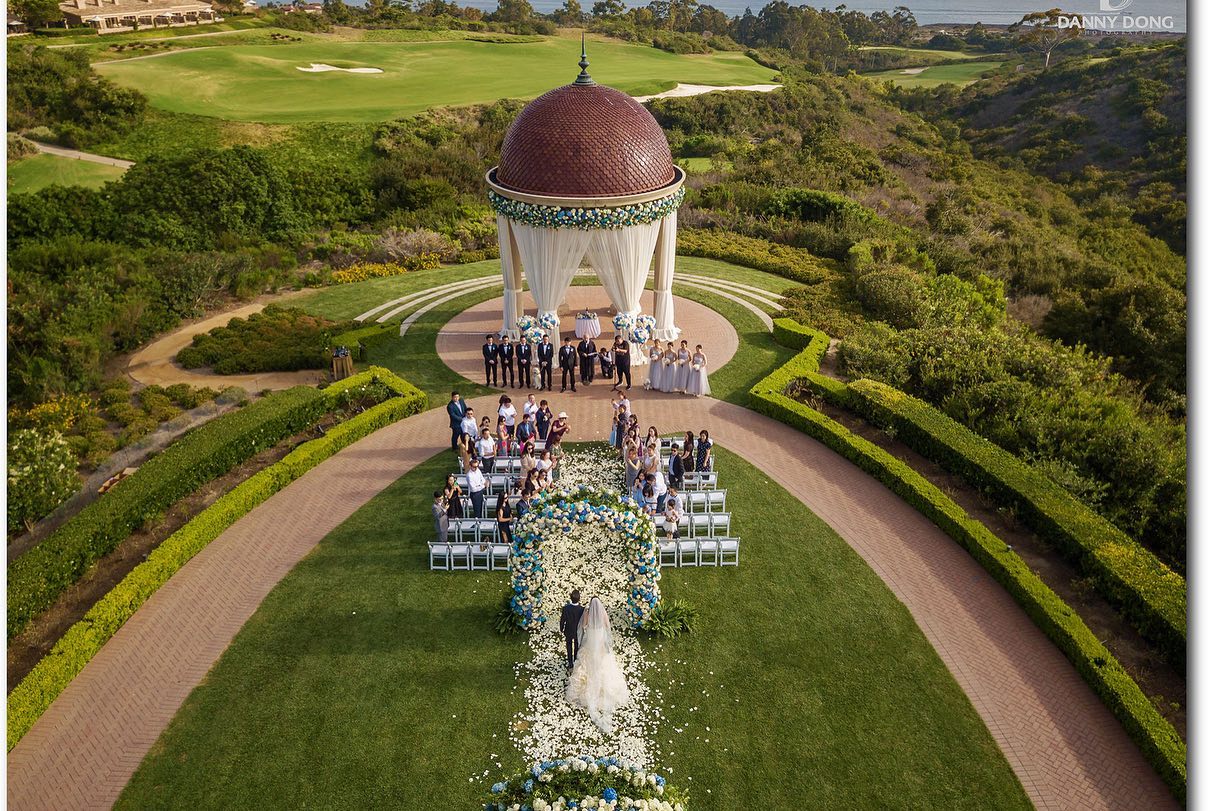
Legally Registering Your Drone

As per the US laws for flying drones or any unmanned aircraft system (UAS) or uncrewed aircraft (UAV), you are required to register your device with the Federal Aviation Administration. If it weighs above 55lbs, you will have to register it for traditional aircraft registration under 14 CFR Part 47. Note that different rules and regulations apply to flying drones for recreational activities and commercial purposes. Whenever you are operating your device, you are required to have your FAA registration certificate with you (either in print or digital file). For detailed information on registration, you can refer to this article.
Getting Insurance
Operating a drone without insurance is not widely recommended. Even when you are a well-trained drone wedding photographer, even a small mistake can get you into trouble or can end up costing you (and drones are expensive!). Note that it is not a legal requirement to get insurance to operate a drone in the US. However, having insurance does have its benefits. After all, it is better to have a safety net in the form of insurance. To get a better understanding of drone insurances, you can refer here.
Safety Measures To Keep In Mind While Operating Drones

- Flying Limit: For both recreational and commercial purposes, at all times, the operator is required to fly the drone within visual line-of-sight. Moreover, the maximum flying altitude is 400 ft. above ground level.
- Know Where You Can And Cannot Fly: Your drone certification doesn’t allow you to fly the device everywhere. For starters, operating drones near an airport is not allowed or requires a prior permit. Also, there are no drone zones where flying drones is completely prohibited. To get a better understanding of the limitations, you can refer to this page. Or else, you can also refer to the B4UFLY app.
- Do Not Shoot Indoors: Be mindful of the safety precautions and understand that even though some venues may offer you enough space to fly a drone inside, it doesn’t mean you should. Try keeping drone wedding photography mainly for the outdoors.
- Watch Out For Weather: It goes without saying but flying and operating any type of UAS is unsafe when the weather is bad. Check the weather forecast for strong winds, storm predictions, and rain.
- Do Not Fly Over Moving Vehicles: As per FAA’s regulations, you cannot fly drones over any moving vehicles, be it cars or trains. So steer clear of operating your UAS above roads.
- Avoid Close-Up Shots: When photographing people using drones, rather than taking close-up shots by flying the drone near them, zoom in from a distance. There are two reasons for this, the first being the general safety measures. Second, drones make a substantial amount of noise which can get annoying.
Drone Wedding Photography Ideas & Tips
1. Get Creative With Posing

When it comes to drone wedding photography, posing your couples can be different than posing for regular cameras and angles. Think from a bird’s-eye view perspective. Small gestures that would otherwise instantly grab attention in portraits might appear to be quite different or not-so-obvious from the point of view used by drones. So experiment with different posing techniques. You could try asking the guests or the bridal party to gather around the couple while still keeping your couple as the focal point of the image or for a couple’s portrait, you could ask your bride and groom to lie down (if practical) and look at each other.
2. Use the Length of the Wedding Dress Train
Use the length of the wedding dress train to your advantage. Remember, you are not just posing your couples around each other but also any subject that can add to the scene. And the train of the wedding dress, when framed well, can add a hint of elegance to the photograph. Capturing a bride walking up the stairs with the dramatic train of her dress behind her is also another scene you could try.
3. Pay Attention to the Surrounding Landscape

When you decide to go with drone wedding photography, remember to pay attention to the surrounding landscapes of the venue, especially when it’s a beach, vast, open field, or a mountain. The background is pretty much the entire essence of drone photography. This is where you can let your composition skills shine through.
4. Learn Which Focus Mode To Use
You will find two types of focus modes when operating a drone – continuous focus mode and single autofocus mode. If you have your subject posed at one place and your drone is not in continuous motion and just hovering, single autofocus mode can help you lock the focus on your subject. However, if you require your drone to be continuously moving or if the subjects are in motion, continuous focus mode can be of better help.
Further Read: Wedding Photo Ideas: Inspiration From ShootDotEdit Customers

Remember that as fun as drones can be, they are always to be operated with caution. So educate yourself on necessary safety protocols and imposed limitations. This will only help you better establish yourself as a professional drone wedding photographer, and more importantly, will keep you away from any kind of trouble. Moreover, as long as you operate them without breaching any laws, they can be a creative tool to help elevate your photography style to new heights.
At ShootDotEdit, we offer professional photo editing services that can help lessen your post-production workload. To learn more about how we can help your wedding photography business, take a look at our pricing plans.


Leave a comment